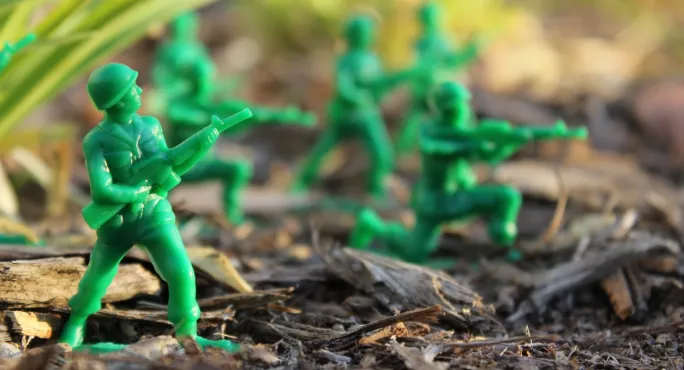Classroom practice: 8 steps to better group work

“Sir, can’t we choose our own groups?” was a pretty continual refrain in my classroom any time I tried to set up some sort of collaborative activity. It ranked up there with “Can we have a fun lesson?” and “Miss X always lets us listen to music” on the irritating comments scale.
Early in my career, and keen for a quiet life, I often made the mistake of agreeing to those demands. It rarely worked out well. The more extrovert members of the class would flock together, jubilant at the prospect of spending a whole hour gossiping with each other.
Meanwhile, some shyer students would look around sadly in the vain hope that someone would want to join up with them. Their mournful eyes were enough to remind me that plenty of pupils who would never dream of shouting their preferences out loud were keen for the teacher to take charge of group allocations. It’s always worth remembering the silent voices in a classroom.
Tes’ 10 questions: with Ryan Wilson
Tes magazine: Group work is hard to get right, but don’t admit defeat
Listen: Why teachers shouldn’t fear group work
Most teachers would agree that group work is important from time to time in lessons. After all, the vast majority of jobs require some sort of collaborative working and, if it’s our role to prepare them for the big wide world, we’d be letting them down if we didn’t teach them the skills to contribute usefully in a group.
But getting good group work in the classroom is not easy. I’ve seen it go wrong more times than I can remember, more often than not in my own teaching. To name a few: kids forget which group they’re supposed to be in, dominate the discussion, spend the entire time skiving, clash personalities, run out of time or finish in 10 minutes.
Group work: how to get it right
So, while acknowledging that none of this is exactly reinventing the wheel, here’s a little collected advice from someone who has made all the mistakes.
Emphasise the importance of collaborative skills
I found there’s a temptation to assume that pupils know what we’re looking for in group work but it’s worth making it explicit. We’re interested not only in the outcome of the task but in how well they work together, show active listening skills, involve other people and pull their weight without dominating.
Define the outcomes
The actual task itself needs really defined outcomes. What do you want them to have achieved and by when? If you can display that information somewhere, in order to keep minds focused, so much the better. I also think it benefits from being in short, manageable chunks; longer tasks mean more opportunities for minds to wander.
Create new groups after the first task
My default is to go for mixed-ability groups, because life is, after all, mixed ability. But grouping by ability has its place, too. If I was feeling ambitious, I would try rainbow groups; you’d have a red table working on one thing and an orange table working on a different thing, and so on. And when time was up, you’d form new groups made up of one person from each colour, so they could, in theory at least, pool their understanding of what they had all discussed.
Consider friendships
One way I found to quash the moaning about not getting to work with friends was by sometimes organising groups around students you think would choose to work together; you allow friends to work together but, because you’ve allocated the groups, it’s without the corresponding downside of others left searching for a group.
Make sure everyone has a role
Bear down on potential shirkers by making sure everyone in the group has a role and run through a job description for each: you could have a group leader, a spokesperson, someone whose role is to ask questions of and challenge the group, someone who’s in charge of presenting the findings on paper, and so on. I used the mantra “you’re not done till everyone is done” to discourage an individualistic approach.
Think about group size
It’s worth thinking about group size. Too big and there are too many places to hide and too many roles to try to think of. Too small and it can be difficult to get the discussion going. It depends on the task, of course, but I usually found three or four to be about right.
Give individual marks
When you speak to students, especially conscientious ones, about group work they are often worried about getting a collective mark rather than an individual one. For that reason, it can be helpful to give individual marks for group contribution.
Don’t be hard on yourself
Group work can be unpredictable. There are lots of factors at play, and not all of them are in your control as a teacher, so don’t be too hard on yourself. Even as adults, we can find working with others complex and challenging at times. That struggle is a worthwhile lesson in itself, and the beauty is that you can always try it a different way next time.
You need a Tes subscription to read this article
Subscribe now to read this article and get other subscriber-only content:
- Unlimited access to all Tes magazine content
- Exclusive subscriber-only stories
- Award-winning email newsletters
Already a subscriber? Log in
You need a subscription to read this article
Subscribe now to read this article and get other subscriber-only content, including:
- Unlimited access to all Tes magazine content
- Exclusive subscriber-only stories
- Award-winning email newsletters